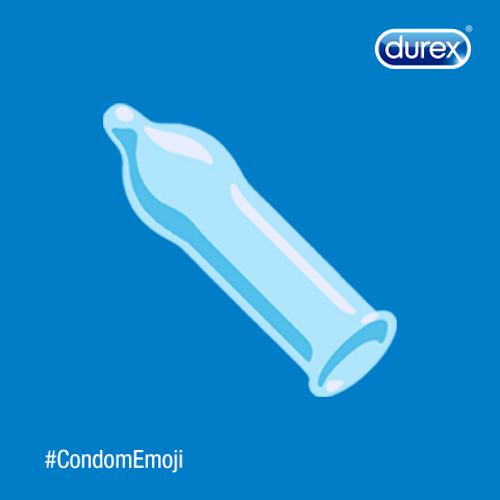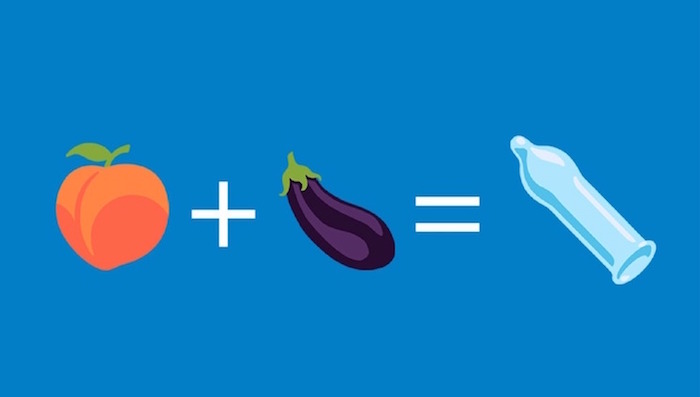Death of an Ad Man: Durex and their defensible condom emoji
Welcome to Death of an Ad Man, where we celebrate the industry Stephen Leacock once described as “a judicious mixture of flattery and threats.”
I’ve admitted it before on the site, but I happen to abstain from using emojis (see: The “Aziz Ansari/Watch the Throne” argument). I know I’m swimming against the digital messaging current with this choice — emojis have become so ubiquitous that they’ve conquered the Facebook Like — but I just prefer to find the proper words to express my feelings and desires rather than rely on a little yellow face’s ability to pantomime.
However, having said that, I’ve got to hand it to Durex with their latest marketing campaign: the condom emoji.
With one simple icon, Tinderers and bashful high school students everywhere could easily let their soon-to-be partners know that they expected condoms to be a part of the festivities, all without having to traipse through the awkward conversations about sexual health that constantly get left out of the equation.
Think of how handy a condom emoji would be when, according to Durex#:
- 80% of 18-25 year olds find it easier to express themselves using emojis and more than half of respondents regularly use emojis when discussing sex
- 84% of 18-25 year olds say they feel more comfortable talking about sex using emojis
Like bees dying en masse, the polar ice shelves melting, or The Muppets on ABC, the proliferation of safe-sex awareness and materials is one of those sneaky uber-important issues that for some reason doesn’t nab a lot of headlines. But there are an estimated 34 million people globally who have been diagnosed with the HIV virus, and according to the CDC’s 2014 STD Surveillance Report, reported cases of the big three nationally notifiable STDS – chlamydia, gonorrhea, and syphilis – have increased for the first time since 2006.
Young people in the United States are especially vulnerable:
Despite being a relatively small portion of the sexually active population, young people between the ages of 15 and 24 accounted for the highest rates of chlamydia and gonorrhea in 2014 and almost two thirds of all reported cases.
Additionally, previous estimates suggest that young people in this age group acquire half of the estimated 20 million new STDs diagnosed each year.
However, Durex and their latest advertising social justice campaign have finally started thinking like a sexually active 16-34 year old, and this condom emoji may actually be one of the best ideas the safe-sex movement has come up with in recent memory.
The Gates Foundation bribe of $100,000 to anyone who could improve upon the relatively-uninnovated design of the standard condom may be a great investment for the long run, but the condom emoji is a simple, cost-free solution that could be implemented immediately.

Not to mention, tying it in with World AIDS Day on December 1st is a stroke of genius.
When you’re in a marketing brainstorm, if you can ever tie in a ‘common good’ angle to your pitch or attach your idea to a holiday, you’re guaranteed to get huge bonus points from bosses and/or clients. This #CondomEmoji campaign – much like Durex’s 2-in-1 ‘Massage and Play’ lubricants – accomplishes both at the same time.
Plus, since this isn’t officially an ad campaign, Durex can use call-to-actions like “Use the #CondomEmoji as much as possible” and “Spread our message” without coming off as shameless as they would if this were all for some product of theirs (like, say, this fishbowl full of 144 condoms#). As purveyors of progress, they’ve positioned themselves as the hero in a battle against the faceless Unicode Constortium — the organization in charge of determining future emojis — so that rooting against Durex is damn near impossible when it comes to the #CondomEmoji campaign.
I don’t mean to blow my load, but Durex really figured out the perfect formula with this one…

Submitted To Death of an Ad Man, Emojis
Like what you read? Share it.
(That helps us.)
Love what you read? Patronize Bryce Rudow.
That helps us and the writer.
What is Patronizing? Learn more here.

